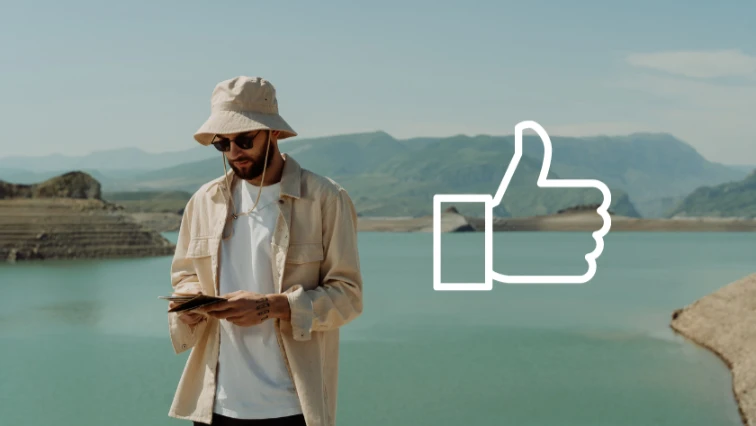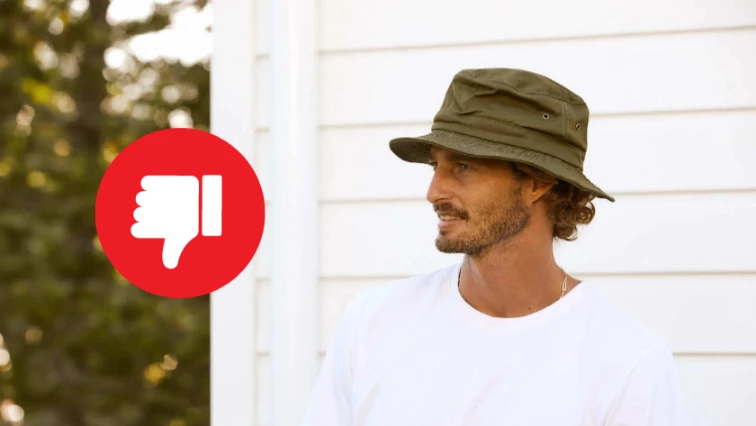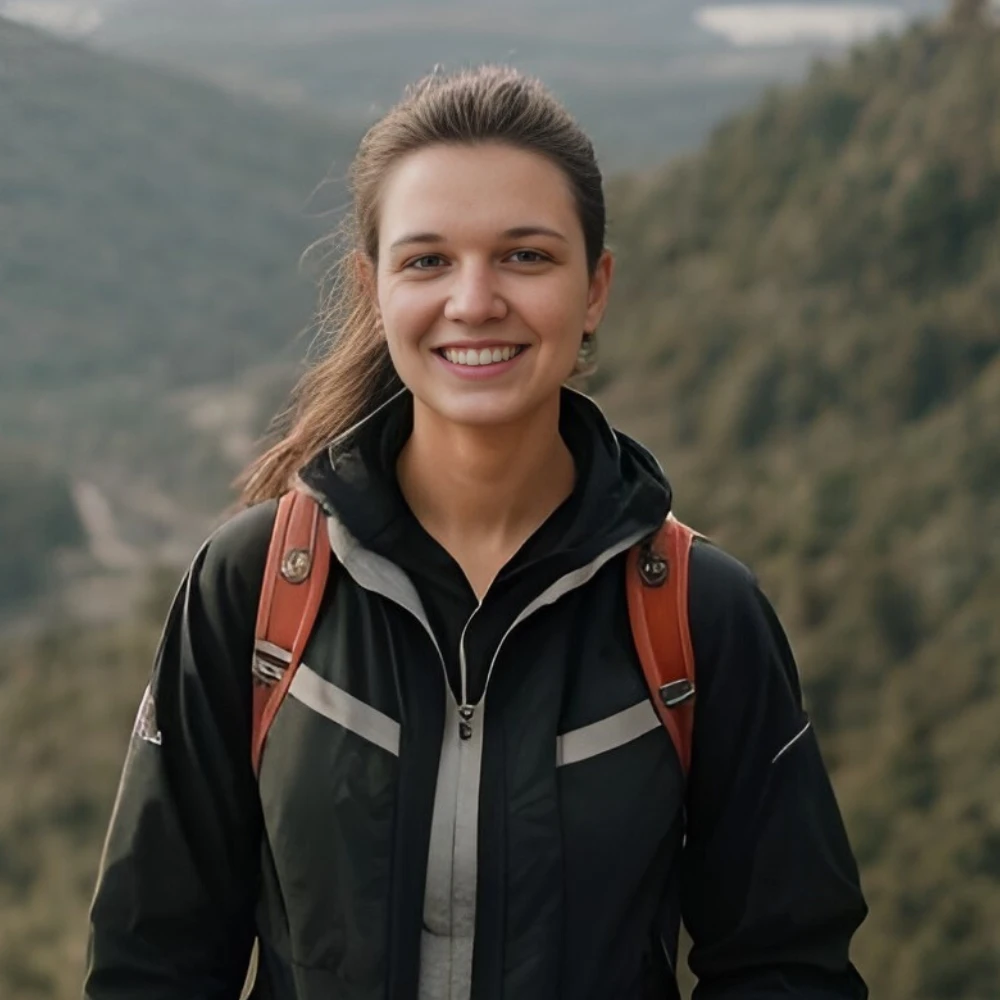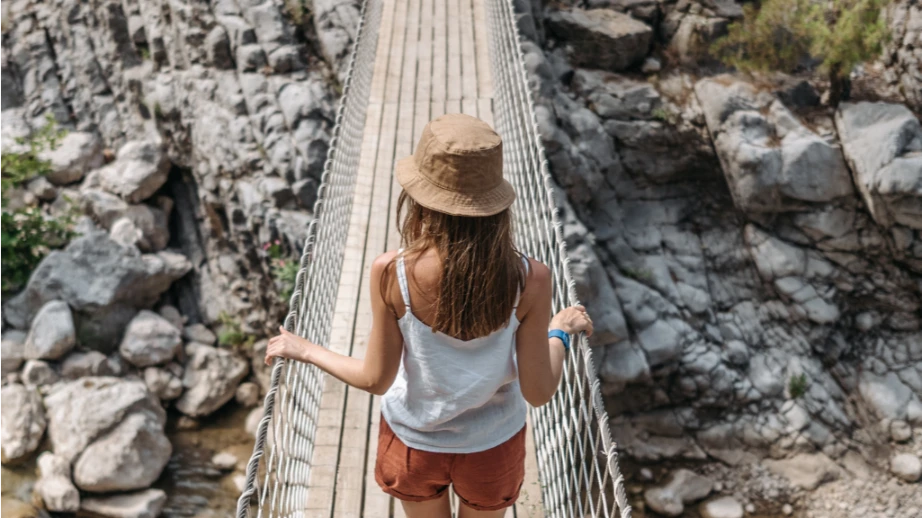Bucket hats are not exactly the first thing that pops into your mind when you gear up for a hike. Between their laid-back vibe and the fact that they don’t offer the wide brim of, say, a safari hat, it’s easy to overlook them.
Honestly, I used to think they were more suited for a beach day than a day on the trails. But I still find myself reaching for a bucket hat more often than not.
Sure, they might not win any fashion awards in the hiking community (though I beg to differ!), and they have their limitations. Yet, they still offer some distinct advantages that make them unique.
Here, we’ll explore why, despite not being the traditional choice for hikers, bucket hats can still be a great addition to your hiking outfit.
Can Bucket Hats Protect You From the Sun?
Yes, bucket hats can protect you from the sun effectively but they have some limitations. For a bucket hat to serve its purpose under the sun, it needs two key features: UPF of at least 40+ rating and a brim of more than 2 inches because it determines how much shade your face gets.
Now, you might be wondering, why pick a bucket hat over, say, a wide-brim hat? For one, during milder weather when the sun isn’t as fierce, a bucket hat strikes the perfect balance between lightweight comfort and sufficient sun protection.
It’s not as bulky as a wide-brim hat, making it an ideal choice for those who prioritize ease and convenience on their hikes.
Personally, I love my Cotopaxi Tech bucket hat. It ticks all the boxes for me – lightweight, comfortable, and most importantly, it offers great protection against the sun. It doesn’t hurt that it looks pretty stylish, too!
Pros of Wearing Bucket Hats for Hiking

Sun Protection
The majority of high-end bucket hats come with a UPF rating of at least 40. You need this protection because it blocks out over 97.5% of the sun’s UV rays.
Even if you hike mostly in cloudy weather, you still need a UPF 40+ hat. UV rays have a ninja-like ability to sneak through the clouds, and they’re just as eager to meet your skin, whether it’s sunny or not. In fact, I’ve had some of my worst sunburns on days when I thought the sun was on a break.
Ventilation
Bucket hats usually feature lifesavers known as mesh panels. Let’s say the temperature is hovering around the 80-90°F mark. Without proper ventilation in your hat, your head starts to feel like a furnace.
Mesh panels act like little windows on your hat, letting the air flow in and out, keeping your head cool even when the sun is doing its best to turn up the heat.
You want to find a balance. Too much mesh, and you compromise on sun protection (as we’ve talked about before). Too little, and you might as well be wearing a wool beanie.
Look for a hat that has mesh panels strategically placed, usually on the sides, to maximize airflow without letting too much sunlight in.
Chin Straps
Hiking in places where the wind is howling, gusting up to 20 mph? You might think your hat is secure, but without a chin strap, you’re just one gust away from saying goodbye. Fortunately, many bucket hats come with adjustable chin straps to keep your hat firmly in place when the wind picks up.
You want a chin strap that’s easily adjustable and comfortable. There’s nothing worse than a chin strap that digs into your skin or is so loose it’s practically useless. Look for straps with a toggle – they allow you to easily adjust the tightness to find a perfect fit.
Quick-drying and Lightweight
Bucket hats are small and light as a feather (usually under 4 ounces). You might forget you’re even wearing it.
A quick-drying feature is another must-have. Nobody wants to start day two of a hike with a damp hat, right? Lightweight materials used in bucket hats usually dry out fast, so by the time you’ve set up camp and had a bite to eat, your hat is ready to go again.
Durability and Sustainability
Bucket hats are usually made of durable, recycled nylon. It withstands the elements, resists wear and tear, and most importantly, it keeps its shape and functionality over countless adventures.
Durability means you’re not buying a new hat every season. It’s kinder to your wallet and our planet. A win-win!
Even better, when you choose a hat made from recycled materials, like nylon, you’re doing more than just getting a piece of high-quality gear. You’re saying yes to reducing waste and lowering the demand for new raw materials. It’s a small choice that adds up when more of us get on board.
Cons of Wearing Bucket Hats for Hiking

Insufficient Brim Width
After a few hikes wearing my first bucket hat, my eyes were squinting, and my face felt like it was on the frontline against UV rays. I realized that the brim width of my hat was just not enough.
Most standard bucket hats come with a 2-inch brim. At first glance, they seem fine. They cover your head, right? But when it comes to blocking out the sun, especially during peak hours, a 2-inch brim falls short, quite literally. It does an okay job but doesn’t fully shield your eyes or face from the sun.
Why Wider is Better
Personally, I prefer hats with wider brim, let’s say around 3 to 4 inches, for the most extreme conditions. Here’s why:
- Enhanced Eye Protection: A wider brim means less squinting and more enjoying views.
- Fuller Face Coverage: More brim width equals better coverage for not just your eyes but your whole face.
- Prevents Sunburn: 1-2 extra inches can help keep sunburn at bay, covering areas that a narrower brim misses.
Wind Vulnerability Without Chin Straps
I’ve already discussed the usefulness of the chin straps. But what happens when you come across a bucket hat without one? Bucket hats are especially vulnerable to wind due to their lightweight fabric and lack of a fitted brim. It’s important to choose one with an adequate brim width and a chin strap if possible.
Without it, your bucket hat is at the mercy of the wind, which can be quite strong, especially in open areas or higher altitudes. This leads to the potential loss of your hat and leaves you unprotected from the sun.
Lack of Neck Coverage
The sun doesn’t love your skin as much as you might think, especially the delicate area around your neck. Bucket hats are great for shading your face, but they often leave your neck exposed to harmful rays.
A sunburned neck is no joke. It’s painful, it’s risky, and it can put a real damper on your post-hike glow.
How to Protect Your Neck?
What can you do to keep your neck protected without having to stop every two hours to slather on more sunscreen?
- Use a Neck Gaiter: A good neck gaiter can protect your neck from the sun without making you too hot. Plus, they’re lightweight and easy to pack.
- Collared Shirts: Wearing a light, long-sleeved collared shirt can provide an extra layer of protection for your neck. Look for breathable, moisture-wicking fabrics to stay comfortable.
- Strategic Sunscreen Application: Even with physical barriers, don’t skimp on sunscreen. Apply a broad-spectrum sunscreen on your neck and ears before heading out. Choose a water-resistant type if you’re expecting to sweat or encounter water.
Uncomfortable Fit for Large and Small Head Sizes
Most bucket hats come with a standard head circumference of about 22 inches, which may not fit everyone comfortably.
Did you know the average head circumference is 21.6 inches for women and 22.4 inches for men? What’s more, our head sizes can vary by 0.5 to 1 inch or more. That means a lot of us end up in that awkward zone where “one size” doesn’t quite fit.
Why It Matters
An uncomfortable hat isn’t just a minor annoyance. On a long hike, it can lead to:
- Distractions: Constantly adjusting a loose hat or dealing with the pressure of a tight one can take your focus away from the beauty around you.
- Headaches: Tight hats can restrict blood flow, leading to headaches.
- Loss of Protection: A hat that doesn’t fit well can fail to protect you properly from the sun.
However, there are ways to ensure your next bucket hat fits just right, keeping you comfortable and protected.
Grab a tailor’s tape measure and wrap it around your head, just above your ears and eyebrows. This will give you your true head size. Write it down and keep it handy for your next shopping trip.
And don’t forget to see what others are saying before you buy. If there are many complaints about fit, it might be best to look elsewhere.
Style
I always say that style on the trail should be second to functionality. But that doesn’t mean you have to sacrifice style completely.
My daughter says that bucket hats “only look good on fishermen.” Funny, especially since that’s where these hats got their start!
The truth is, bucket hats are not the most fashionable accessory and it’s a turn-off for many hikers. But they can still add a touch of personal style to your outdoor outfit.
For example, Cotopaxi bucket hats are nothing short of eye candy with their vibrant colors. And let’s not forget personalities such as Billie Eilish, who rocks bucket hats and looks stylish as hell doing it.
So don’t let anyone tell you that bucket hats are just for fishing or looking dorky. With the right fit and style, they can be a versatile and stylish addition to your outdoor wardrobe.
Conclusion
Bucket hats are unique, no doubt about it, and they carry all the essential features to shield you from the sun. Sure, we could all use a bit more brim for broader coverage, but then again, wouldn’t expanding the brim strip away the very essence of what makes a bucket hat… well, a bucket hat? It’s this uniqueness that sets them apart on the trails.
I won’t sugarcoat it, choosing a bucket hat for your hikes isn’t the most conventional path. You might even catch a few fellow hikers off guard, their curiosity piqued by your distinctive headwear choice.
But isn’t that part of the fun? Sparking conversations and maybe even receiving a compliment or two for standing out? It’s not every day you see a hiker rocking a bucket hat with confidence!

Martha Heller
Hey there! I’m Martha, the face behind BigfootHiking.com – a blog I created alongside my husband Lukas. Originally from Phoenix, I’ve made hiking my life’s passion. With over 100 hikes under my belt in the past 7 years, and still counting, I’m always on the move. One of my proudest achievements was conquering Angel’s Landing in Zion National Park. When I’m not on the trails, you’ll find me tinkling on the piano or lost in my drawings. Drop by our blog for tips, tales, and plenty of trail inspiration!




